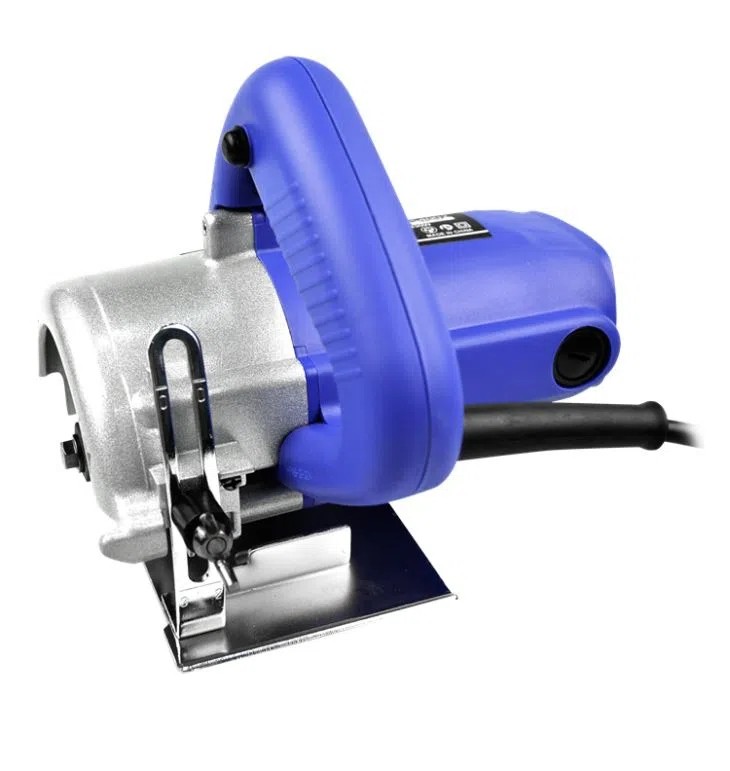
Aug 27, 2025

Aug 12, 2025

Jun 04, 2025

May 30, 2025
B4, Qingdao High-Tech Zone, No. 17 Songyuan Road, Qingdao.
+86 13864822549

In the realm of construction and stonework, the Portable Marble Cutter stands as a versatile and indispensable tool. Whether you're a seasoned contractor or a DIY enthusiast, understanding the intricacies of this powerful device can significantly enhance your efficiency and precision. Let's delve into the workings of the Portable Marble Cutter, its operational nuances, and the essential precautions to ensure safe and effective use.
## The Working Principle of the Portable Marble Cutter
At its core, the Portable Marble Cutter operates on a simple yet ingenious principle. It utilizes a high-speed rotating blade to slice through marble and other stone materials with remarkable accuracy. The blade, typically made from diamond-impregnated segments, is mounted on a sturdy spindle. As the motor powers the spindle, the blade spins at thousands of revolutions per minute (RPM). This rapid rotation generates the necessary force to cut through the dense and hard structure of marble.
The cutting process is further enhanced by the presence of water in many models. Water acts as a coolant, preventing the blade from overheating and reducing friction. It also helps to minimize dust particles, which can be both a health hazard and a potential source of damage to the cutting mechanism. The water is usually fed through a small hose connected to the cutter, ensuring a steady stream that keeps the cutting area moist and clean.
Key Considerations for Safe Operation
Operating a Portable Marble Cutter requires a meticulous approach to safety. Here are some crucial points to keep in mind:
1. Personal Protective Equipment (PPE): Always wear safety goggles to shield your eyes from flying debris. Ear protection is also essential due to the high noise levels generated during cutting. Additionally, gloves can protect your hands from accidental cuts and abrasions.
2. Stable Work Surface: Ensure that the marble or stone slab is securely fastened to a stable workbench. Any movement during the cutting process can lead to inaccurate cuts and even accidents. Clamps or specialized holders are recommended to keep the material in place.
3. Blade Inspection: Before each use, inspect the blade for any signs of damage, such as cracks or missing segments. A compromised blade can break during operation, posing a significant risk. If you notice any issues, replace the blade immediately.
4. Proper Blade Alignment: Align the blade with the cutting line marked on the marble. Precision is key, so take your time to ensure that the blade is positioned correctly. Even a slight misalignment can result in an uneven cut.
5. Water Supply: If your Portable Marble Cutter is designed for wet cutting, ensure a steady flow of water. Insufficient water can cause the blade to overheat and wear out prematurely. Check the water supply system regularly for any leaks or blockages.
## Operating the Portable Marble Cutter
Once you've taken all the necessary safety precautions, you can proceed with the cutting process. Here's a step-by-step guide to operating your Portable Marble Cutter:
1. Mark the Cutting Line: Use a straight edge and a marker to draw a clear and precise line on the marble where you want to make the cut. Accuracy at this stage will determine the quality of the final cut.
2. Secure the Cutter: Position the Portable Marble Cutter so that the blade is aligned with the marked line. If your model has adjustable settings, ensure that the blade depth is set correctly. The blade should only penetrate as deep as necessary to cut through the material.
3. Start the Cutter: Turn on the motor and allow the blade to reach its full operating speed. This may take a few seconds, so be patient. Once the blade is spinning at the correct RPM, gradually lower it onto the marble along the marked line.
4. Maintain a Steady Pace: As the blade cuts through the marble, maintain a steady and even pace. Avoid forcing the blade; let the motor and blade do the work. Applying too much pressure can cause the blade to bind or the motor to overheat.
5. Monitor the Cutting Process: Keep an eye on the cutting line and the blade's progress. If you notice any deviation, stop the cutter immediately, realign the blade, and continue. It's also important to monitor the water flow if you're using a wet cutting system.
6. Final Touches: Once the cut is complete, turn off the motor and allow the blade to come to a complete stop. Carefully remove the cut pieces of marble, taking care not to touch the hot blade.
Conclusion
The Portable Marble Cutter is a powerful and efficient tool that can transform your stonework projects. By understanding its working principle, adhering to safety guidelines, and following proper operating procedures, you can achieve precise and professional results. Whether you're cutting intricate designs or simply shaping marble slabs, this versatile device is sure to become an invaluable addition to your toolkit. So, gear up, take the necessary precautions, and let your creativity flow with the help of the mighty Portable Marble Cutter.